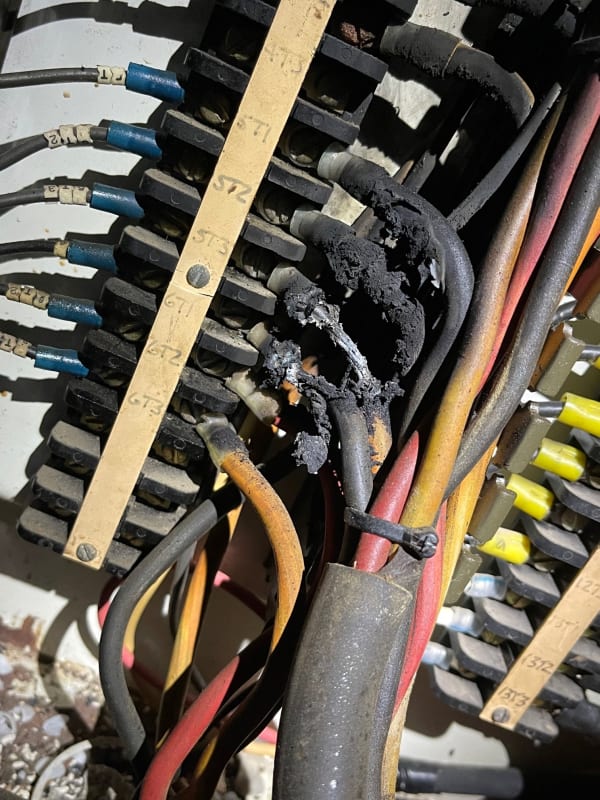electricpete
Electrical
- May 4, 2001
- 16,774
I was asked to look at a photo of some damage found in some wiring in a control panel (my understanding is that nothing tripped, blew or alarmed, the damage was just visually found). I'm remote with very limited data and communications and was asked to give an opinion about the cause.
I haven't tracked down the circuit of involved wires yet. But the interesting thing is the physical characteristics of several different vertically-adjacent wires all damaged at this location but apparently not further away. It leads me to believe the problem originated here and propagated from one wire to the others thermally at this location. Most likely a loose crimp on a lug landed at terminal strip point 573, 671 or 672. I don't think a short occurred because there is no report of blown fuse or tripped breaker and I don't really see a anything that points towards a short although the visibility is limited in some places. At the same time I don't really see a slam dunk location where the high resistance would've been.
I recognize this is woefully small amount of info. (I will get more if I can about what are the associated circuits along with more detailed inspection results.) I'm just curious if anyone has ideas about what observations about the photo that might shed light on the possible origins of the damage?

=====================================
(2B)+(2B)' ?
I haven't tracked down the circuit of involved wires yet. But the interesting thing is the physical characteristics of several different vertically-adjacent wires all damaged at this location but apparently not further away. It leads me to believe the problem originated here and propagated from one wire to the others thermally at this location. Most likely a loose crimp on a lug landed at terminal strip point 573, 671 or 672. I don't think a short occurred because there is no report of blown fuse or tripped breaker and I don't really see a anything that points towards a short although the visibility is limited in some places. At the same time I don't really see a slam dunk location where the high resistance would've been.
I recognize this is woefully small amount of info. (I will get more if I can about what are the associated circuits along with more detailed inspection results.) I'm just curious if anyone has ideas about what observations about the photo that might shed light on the possible origins of the damage?

=====================================
(2B)+(2B)' ?
